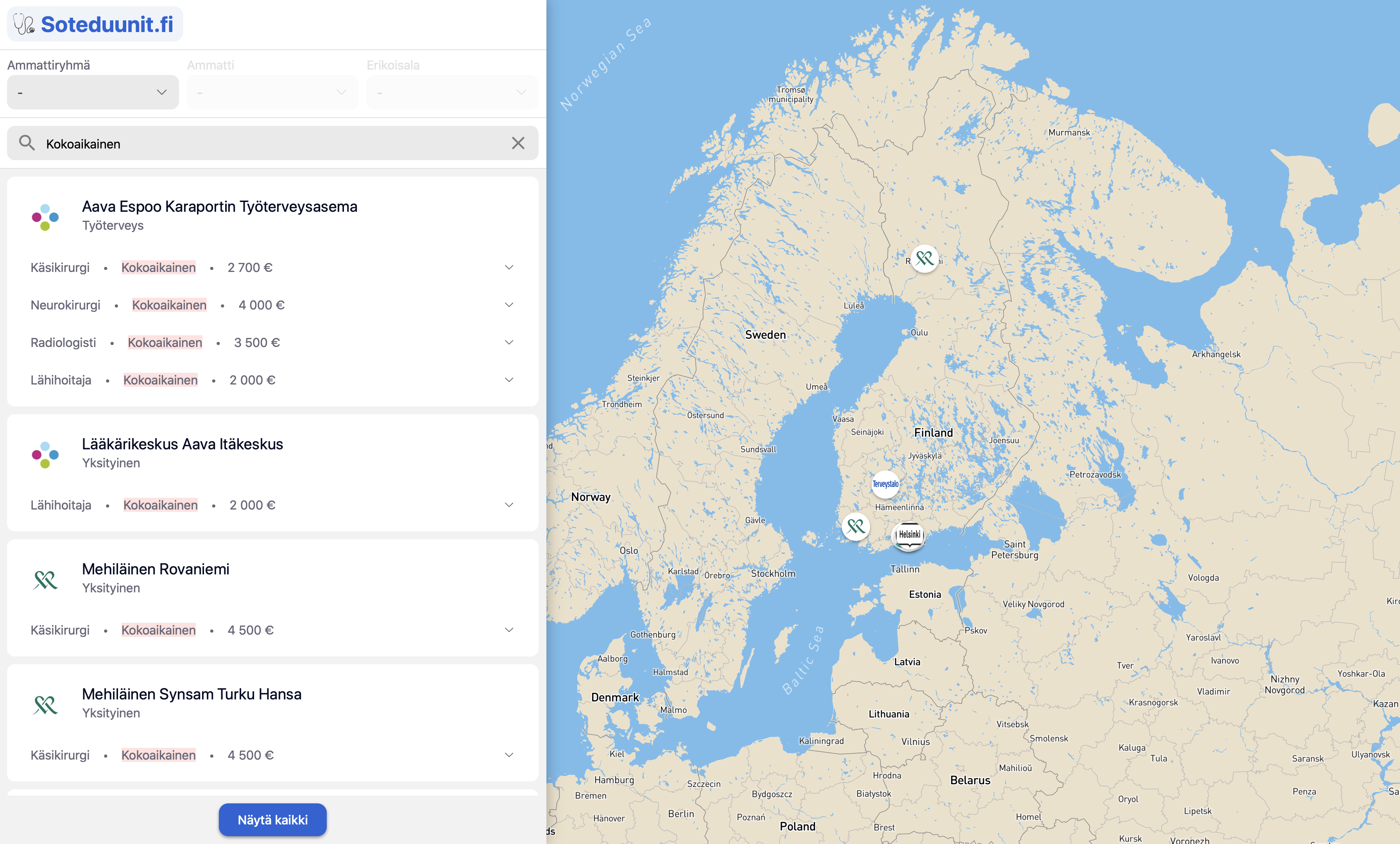Story behind the Soteduunit
I’m a map enthusiast and I have always thought that those are great ways to present information. I also believe that map interfaces are key factors for Airbnb’s, Uber’s and Hoodmap’s success. These were also my reasons to build a demo for job finding platform with a map interface
The usual job searching websites (e.g LinkedIn, Duunitori) are list and text search based searching platforms which makes those tedious to use. Furthermore, it takes even more work to find out where the exact location of the workplace will be. (I personally would still very much like to be at the working place even in the era of remote work). Also the company’s location can tell a lot about the company itself. For example, a company that is near the city centre is probably more successful than some that is in the suburbs area.
In the long run it would also have been nice to have a map based global job finding platform because of the soaring number of remote jobs. Currently, if I want to find a job for example from Berlin, it requires quite a lot of work to do. However, I believe that with a map based interface this job could be made much easier and pleasant.
About the project itself.
At the time my brother, a fresh medical doctor, was considering jobs and was frustrated how bad the current job searching platforms were. I needed some target group for my platform demo and we agreed with my brother to focus first on Finnish healthcare and social welfare organisations.
Discussing with the administration of HUS and certain other health organizations, we managed to get a lot of interest for this project, but then three big obstacles became obvious. Firstly, we realised that Finnish healthcare and social care organisations are very bureaucratic and slow on any decisions they make. Secondly, their job postings were in highly unstructured format, which lacked a way to easily perform API integrations for their job posts. Finally, my brother got a very lucrative offer to be a school doctor and no longer had time to contact various healthcare and social care organisations. (As a medical professional he had brought a lot of credibility to our project.)
After these events I pivoted the project towards startups that I knew would be more agile and easier for me to contact. You can read the idea of Pssst! here.
